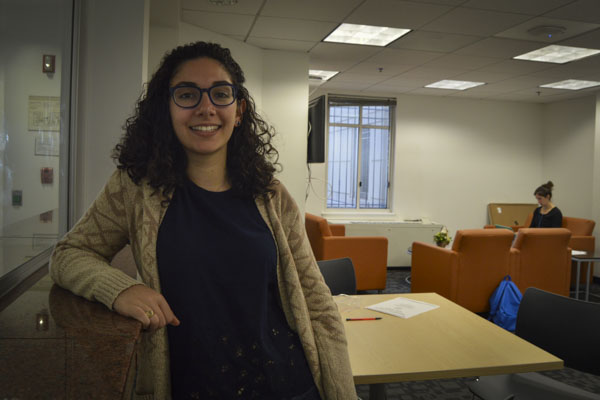Updated: Oct. 6, 2016 at 12:40 a.m.
Students will soon see their residence halls’ common rooms transform into works of art.
The Residence Hall Association is leading a project this semester for residents to design and paint murals in their buildings. The association’s leaders said the project will increase the sense of community within residence halls and beautify common areas.
RHA President Ali Belinkie said she and other leaders pushed for the project to brighten otherwise bland spaces with personalized art.
“I’m excited that there is a streamline opportunity for halls to paint murals now, Belinkie said. “Specially places like District House, there are a lot of new walls that just want color on them.”
Fulbright Hall’s council proposed that students paint over an old mural in the building’s basement last year. Belinkie said last year’s project inspired RHA leaders to extend it to other halls.
Murals will be painted over each year, so new residents can design their own murals in community spaces, she added.
“I don’t think it makes sense for the mural to stay any longer than the people living in the dorm,” Belinkie said.
RHA received 23 design applications from students who want to paint murals in their residence halls this semester. Students who applied were required to submit a color sketch of the proposed mural, a short explanation of why the mural should be chosen, a timeline, the proposed common room location and the names of the students who will help to paint it.
RHA partnered with the Center for Student Engagement, GW Housing and Facilities Services to form an evaluation committee, Belinkie said. Students were notified if their projects were selected on Sept. 30, and they must complete the projects by Oct. 17.
Facilities ordered paint and is providing students with reusable materials like paint brushes and drop cloths. Housing and the CSE determined the location within buildings for murals and ensured that the murals are appropriate. The GW General Counsel, the University’s board of lawyers, served in an advisory role to prevent copyright infringements, Belinkie said.
Each mural costs between $100 and $150, but the total cost of the project is still undetermined, Belinkie said.
Tiger Ricks, hall council president for Phillip Amsterdam Hall, said the project will help residents bond. He said he is interested to see how the mural will immediately impact his hall.
“Ideally it will make people feel like we actually live in an immediate community and not just some sterile college dorm,” Ricks said.
The project gives students the power to design and decorate where they live, Ricks said.
“I just don’t think people realize that this was a possibility for their dorm,” Ricks said. “So once they see a mural painted by a student in a hall they all live in, it will be an eye opener for people that we can actually change things if we want to.”
Abigail Furgal, hall council president of District House, said the mural project will add color to the new residence hall’s walls and show off students’ talents.
“It’s completely funded by RHA’s campus partners, so it is a great way for students to showcase their talent and to get more people involved in the dorms,” Furgal said.
Elizabeth Konneker and Elise Zaidi contributed reporting.







